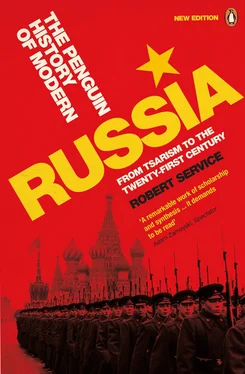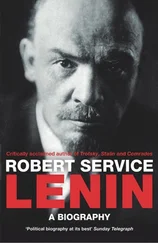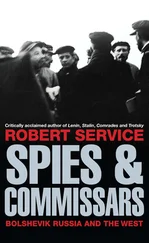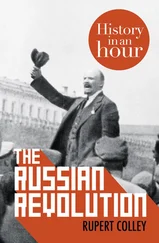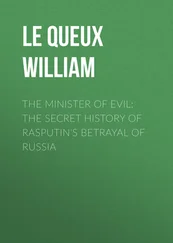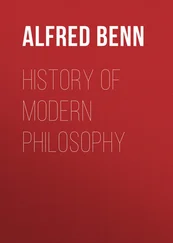The handful of garrison soldiers, Red Guards and off-duty sailors who applied this violence could crush opposition in the capital, but were less impressive elsewhere. Contingents were sent from Petrograd and Moscow to Ukraine where the local government, the Rada, refused to accept the writ of Sovnarkom. Tens of thousands of armed fighters reached Kiev. The struggle was scrappy, and it took until late January 1918 before Kiev was occupied by the Bolshevik-led forces.
All this was gleefully noted by the German and Austrian high commands. Negotiations were held at Brest-Litovsk, the town nearest the trenches of the Eastern front’s northern sector on 14 November, and a truce was soon agreed. The Soviet government expected this to produce an interlude for socialist revolutions to break out in central Europe. Confident that the ‘imperialist war’ was about to end, Lenin and his colleagues issued orders for the Russian armies to be demobilized. To a large extent they were merely giving retrospective sanction to desertions. Ludendorff and Hindenburg at any rate were delighted; for it was German policy to seek Russia’s dissolution as a military power by political means. Inadvertently the Bolsheviks had performed this function brilliantly. Now the Bolsheviks, too, had to pay a price: in December 1917 the German negotiators at Brest-Litovsk delivered an ultimatum to the effect that Sovnarkom should allow national self-determination to the borderlands and cease to claim sovereignty over them.
Around New Year 1918 Lenin asked his colleagues whether it was really possible to fight the Germans. 30Trotski saw the deserted Russian trenches every time he travelled to and from Brest-Litovsk. A Russian army no longer existed to repel attack. In this situation, as Trotski contended, Sovnarkom could not fulfil its commitment to waging a ‘revolutionary war’. And yet Trotski also argued against signing a separate peace with the Central Powers, a peace that was intolerable not only to the Bolsheviks but also to all other Russian political parties. His recommendation was that Bolsheviks should drag out the negotiations, using them as an opportunity to issue calls to revolution which would be reported in Berlin as well as in Petrograd.
Despite his professional inexperience, Trotski proved a match for Richard von Kühlmann and Otto von Czernin who parleyed on behalf of the Central Powers. His tactic of ‘neither war nor peace’ was so bizarre in the world history of diplomacy that his interlocutors did not immediately know how to reply. But in January 1918 the Central Powers gave their ultimatum that, unless a separate peace was quickly signed on the Eastern front, Russia would be overrun. Lenin counselled Sovnarkom that the coalition had no choice but to accept the German terms, and that procrastination would provoke either an immediate invasion or a worsening of the terms of the ultimatum. All the Left Socialist-Revolutionaries rejected his advice. Successive meetings of the Bolshevik Central Committee, too, turned it down. As the ill-tempered deliberations proceeded, Trotski’s policy of neither war nor peace was temporarily adopted. But eventually a choice would have to be made between war and peace.
Lenin concentrated upon persuading fellow leading Bolsheviks. On 8 January he offered his ‘Theses on a Separate and Annexationist Peace’ to the party’s faction at the Third Congress of Soviets of Workers’, Soldiers’ and Cossacks’ Deputies. Only fifteen out of sixty-three listeners voted for him. 31But Lenin was fired up for the struggle. He secured Trotski’s private consent that he would support Lenin if and when it came to a straight choice between war and peace; and he tempted the vacillators with the thought that a peace on the Eastern front would enable the Bolsheviks to ‘strangle’ the Russian bourgeoisie and prepare better for an eventual revolutionary war in Europe. 32
Steadily Lenin gained ground in the Central Committee. Sverdlov, Stalin, Kamenev and Zinoviev backed him strongly, and Bukharin and the Left Communists, as they were becoming known, began to wilt in the heat of Lenin’s assault. At the Central Committee he circulated a questionnaire on contingency planning. Bukharin conceded that there were imaginable situations when he would not object in principle to the signature of a separate peace. Sverdlov’s Secretariat plied the local party committees with a version of the debate that was biased in Lenin’s favour. There was also a distinct lack of impartiality in the Secretariat’s arrangements for the selection of delegates to a Seventh Party Congress which would definitively decide between war and peace. 33And as Lenin had warned, the Germans were not fooled by Trotski’s delaying tactics. On 18 February they advanced from Riga and took Dvinsk, only six hundred kilometres from Petrograd. That evening, at last, a shaken Central Committee adopted Lenin’s policy of bowing to the German terms.
The vote had gone seven to five for Lenin because Trotski had joined his side. But then Trotski had second thoughts and again voted against Lenin. Germany and Austria-Hungary, however, increased their demands. The Soviet government had previously been asked to relinquish claims of sovereignty over the area presently occupied by the German and Austrian armies. Now Lenin and his colleagues were required to forgo all Ukraine, Belorussia and the entire south Baltic region to the eastern edge of the Estonian lands. Sovnarkom would lose all the western borderlands.
Sverdlov took the news to the Central Committee on 23 February that the Germans were giving them until seven o’clock the next morning to announce compliance. Momentarily Stalin suggested that their bluff should be called. But Lenin furiously threatened to withdraw from Sovnarkom and campaign in the country for a separate peace: ‘These terms must be signed. If you do not sign them, you are signing the death warrant for Soviet power within three weeks!’ 34Trotski found a way to climb down by declaring a preference for revolutionary war but postulating that it could not be fought by a divided party. He therefore abstained in the vote in the Central Committee, and victory was handed to Lenin. The Treaty of Brest-Litovsk was signed on 3 March. Cannily Lenin, Russia’s pre-eminent advocate of a separate peace, declined to attend the official ceremony and entrusted this task instead to Central Committee member Grigori Sokolnikov.
Opinion in the rest of the party had also been moving in Lenin’s favour; and at the Party Congress, which lasted three days from 6 March, his arguments and Sverdlov’s organizational manipulations paid off: the delegates approved the signature of ‘the obscene peace’. But at a price. Disgusted Left Communists, with Bukharin at their head, resigned from both Sovnarkom and the Bolshevik Central Committee. The Left Socialist-Revolutionaries were no less horrified, and pulled their representatives out of Sovnarkom. Not even Lenin was totally confident that the separate peace with the Central Powers would hold. On 10 March the seat of government was moved from Petrograd to Moscow, which had not been the Russian capital for two centuries, just in case the German armies decided to occupy the entire Baltic region. Nor was it inconceivable that Moscow, too, might become a target for the Germans.
In fact it was in Germany’s interest to abide by the terms of the treaty so as to be able to concentrate her best military divisions on the Western front. 35Ludendorff needed to finish off the war against Britain and France before the USA could bring her formidable military and industrial power in full on their side. Only then would Germany have the opportunity to turn on Russia. The Bolsheviks had to keep on hoping that socialist revolution would occur in Berlin before any such contingency might arise.
In the meantime Sovnarkom faced enormous difficulties. By the stroke of a pen Russia had been disjoined from Ukraine, Belorussia and the Baltic region. Half the grain, coal, iron and human population of the former Russian Empire was lost to the rulers in Petrograd and Moscow. There would have been an economic crisis even without the Treaty of Brest-Litovsk. The harvest of summer 1917 was only thirteen per cent below the average for the half-decade before the Great War; but this was 13.3 million metric tons of grain short of the country’s requirements. 36Ukraine, southern Russia and the Volga region usually enjoyed good enough harvests with which to feed themselves and sell the remainder in the rest of the Russian Empire. These three regions had a shortfall in 1917–18, and possessed no surplus to ‘export’ to other parts. The Treaty of Brest-Litovsk made a bad situation worse.
Читать дальше
